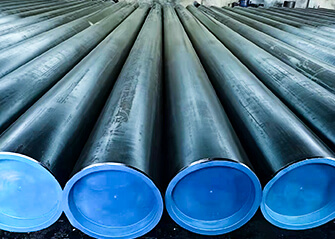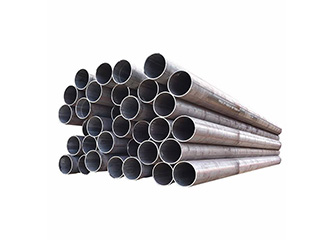316L stainless steel pipe is a pipe material widely used in construction projects. The shape of the pipe body is an oval hollow steel pipe. 316L stainless steel pipes will be used in mechanical equipment, petrochemical equipment, medical equipment, food and light industry transportation pipelines or mechanical parts. Here is a brief introduction to the difference between 316L stainless steel pipes and 316 stainless steel pipes:
production cost variance
The main difference between 316 and 316L is the carbon content. 316L is less than 0.03%, 316 is less than 0.08%. In austenitic stainless steel series, carbon is an element that easily causes intergranular corrosion. The lower the carbon content, the less prone to intergranular corrosion. Therefore, 316L has stronger corrosion resistance than 316 and is more expensive than 316L.
Differences in strength of stainless steel pipes
The tensile strength of 316 stainless steel pipe is higher than that of 316L stainless steel pipe. The tensile strength of 316 stainless steel pipe is higher than 520MPa ~ (316L) stainless steel pipe. The tensile strength of 316 stainless steel pipe is only greater than 480Mpa. This is because carbon is a strong austenite-forming element and can significantly increase the strength of stainless steel pipes.
Differences in welding
Carbon has a negative impact on the corrosion resistance of stainless steel pipes. Especially for stainless steel that needs to be welded, the corrosion resistance of low-carbon 316L stainless steel after welding is lower than that of 316 stainless steel. 316L has good corrosion resistance. The welded section of 316 stainless steel needs to be solution annealed after welding. If 316L stainless steel is used, solution annealing is not required after welding.
Differences in Corrosion Resistance
316L stainless steel pipe has stronger corrosion resistance and is suitable for areas with strong corrosion such as seaside. In addition, considering the previous conditions, it is not recommended to choose 316 stainless steel pipe.
Differences in scope of use
In most cases, 304 stainless steel pipe is sufficient for the application requirements. Since the price of 316L stainless steel pipe is high, from the perspective of material cost, the usage of 316L stainless steel pipe is about 1.5 times that of 304 stainless steel pipe, so the usage of 316L steel pipe should be customized.
How to choose stainless steel material?
Before purchasing stainless steel plates, you should make a decision based on the usage environment and purpose. If it is medical or kitchen, it is recommended to choose sanitary grade stainless steel. For under-pressure decoration, it is recommended to choose 200 series thick-walled pipes. If used in acid and alkali environments, it is recommended to choose 316 stainless steel.
Secondly, when purchasing stainless steel materials, you must also check whether the materials meet the standards. If you choose 304 material, you should check whether there is a steel stamp on the pipe. Generally, authentic 304 stainless steel will not change color when exposed to acid for 30 seconds. However, if you purchase in large quantities, you can take some samples and send them to professional institutions for testing.





.jpg)


.jpg)




.jpg)
